How Many GPM is a Garden Hose? | Unveiled the Flow Rate
Discovering the flow rate of a garden hose is pivotal for efficient watering and various outdoor tasks. If you’ve ever wondered, “How many GPM is a garden hose?” you’re about to unveil the answer. Understanding the gallons per minute (GPM) output of your garden hose can help you optimize irrigation, filling tasks, and more.
In this insightful blog, we’ll dive deep into the factors influencing a garden hose’s flow rate and equip you with the knowledge to make well-informed decisions for your outdoor needs.
Factors Affecting Garden Hose GPM
Hose Diameter
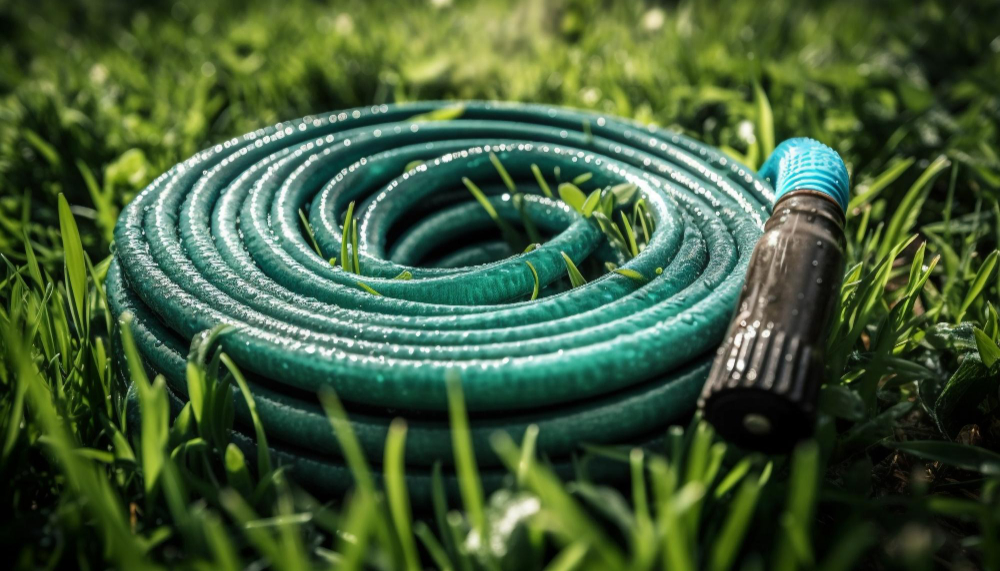
When it comes to unraveling the question: “How many GPM is a garden hose?” several key factors come into play. The first critical factor is the diameter of the hose.
A larger diameter allows for a greater volume of water to flow through the hose per minute. This means that a garden hose with a larger diameter will typically have a higher GPM output compared to a hose with a smaller diameter. Common hose diameters include ⅝ inch and ¾ inch, and understanding their impact on GPM is essential for optimizing watering efficiency.
Water Pressure

The diameter of a garden hose directly influences the GPM it can deliver. A larger diameter translates to a larger internal area, facilitating a higher volume of water to pass through. This results in an increased GPM output, making larger-diameter hoses suitable for tasks requiring substantial water flow, like filling large containers or cleaning outdoor spaces efficiently.
On the other hand, hoses with smaller diameters might have lower GPM outputs, making them more suitable for tasks that don’t demand as much water volume, such as gentle garden watering.
Hose Length

Hose length plays a role in answering the question of how many GPM is a garden hose. Longer hoses can experience pressure loss due to friction along their length. This friction can lead to a decrease in water flow, affecting the GPM output.
It’s important to strike a balance between hose length and desired GPM for different tasks. For instance, if you’re using a longer hose for watering plants, you might need to choose a larger diameter to compensate for potential pressure loss and maintain an adequate GPM output.
Understanding these factors provides a comprehensive insight into the intricate world of a garden hose’s GPM. By considering these factors, you can render judicious choices to meet your specific outdoor needs effectively, whether it’s gently watering delicate plants or powerfully cleaning surfaces.
How Many GPM is a Garden Hose?

How many GPM a garden hose can deliver is a frequently asked question that can cause confusion, often resulting in inaccurate answers. However, understanding the flow rate of a garden hose is not as complex as it may seem, and a few key insights can help unravel this puzzle.
It is important to note that garden hoses come in various sizes, with some being larger than others. This difference in size directly influences the water delivery capacity of the hose. Therefore, to accurately determine the GPM of a garden hose, it is crucial to consider its specific size and specifications.
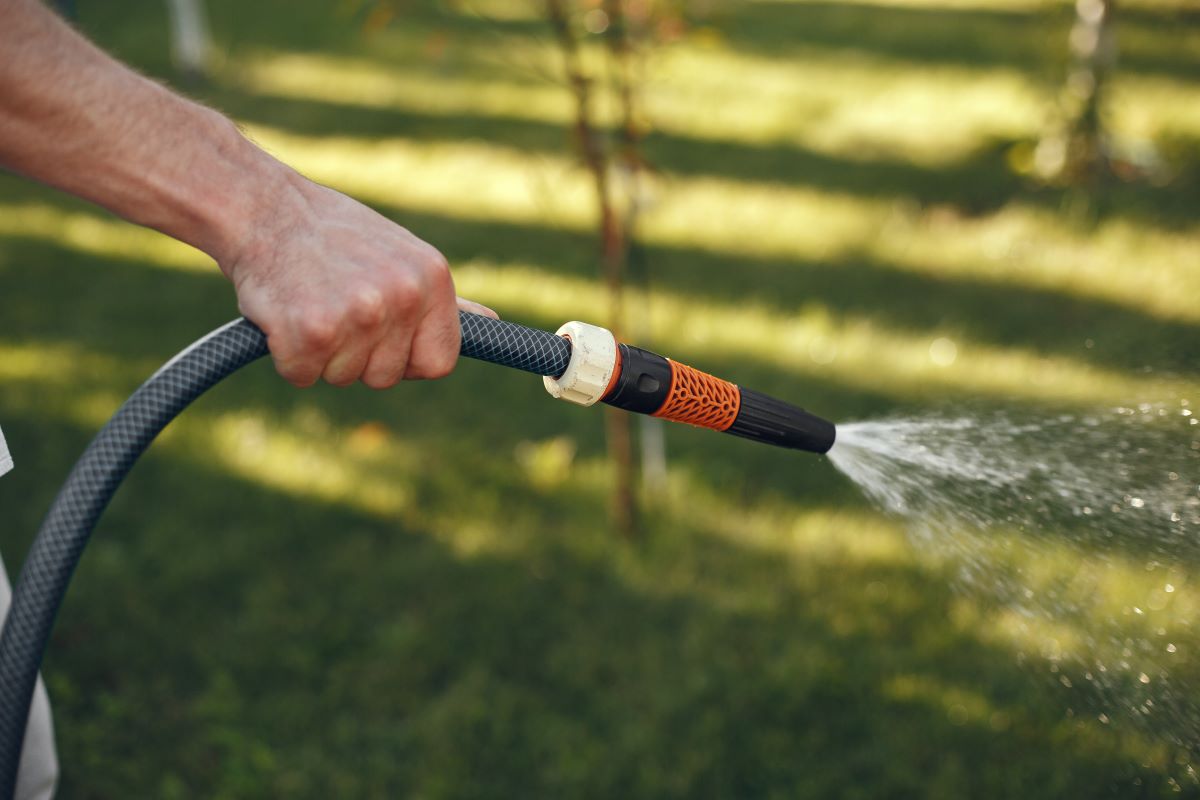
Do you want to determine the GPM? It’s essential to ascertain the water source’s specific size. The calculation involves dividing the source’s capacity by the hose’s diameter. For instance, if a hose boasts a 10 GPM rating and possesses a 3-inch diameter, the computation would be 10 divided by 3, resulting in a flow rate of 3 gallons per minute.
Here’s an overview:
- A garden hose’s diameter corresponds to its GPM (gallons per minute) value.
- 1.0 gallons per minute translates to 10 liters per minute for every 1000 feet.
- Similarly, 1.5 gallons equate to 14 liters, 2.0 gallons to 20 liters, 2.5 gallons to 25 liters, and 3.0 gallons to 30 liters per minute, all within a span of 1000 feet.
To determine how many gallons per hour a garden hose can deliver, you can convert the gallons per minute (GPM) value to gallons per hour (GPH) by multiplying it by 60. This conversion is based on the fact that there are 60 minutes in an hour. So, to find the GPH value, you would multiply the GPM value by 60.
Practical Applications of Garden Hose GPM
Understanding how many GPM is a garden hose extends beyond mere curiosity, as it plays a pivotal role in various practical scenarios. Let’s delve into these applications to grasp the true significance of GPM in everyday outdoor endeavors.
Watering Gardens and Lawns

When it comes to nurturing green spaces, the recommended GPM for efficient irrigation depends on factors such as the size of the area being watered and the needs of the plants. In general, a standard garden hose typically delivers water at a rate of 5-10 GPM. For smaller gardens or potted plants, a lower GPM may be sufficient, while larger lawns may require a higher GPM to ensure thorough coverage and adequate hydration.
Adjusting the GPM based on the plant type and soil conditions is essential to prevent overwatering or underwatering, which can negatively impact plant health. By carefully monitoring the GPM, gardeners can strike a balance between water conservation and meeting the water requirements of their plants.
Washing Vehicles

For vehicle enthusiasts and owners alike, the ideal GPM for effective cleaning based on several factors, including the type and size of the vehicle, the level of dirt or grime, and personal preference. Generally, a GPM of 2-5 is considered suitable for most vehicle washing tasks. Higher GPM values allow for faster and more efficient rinsing, while lower GPM values may be preferred for more delicate surfaces to minimize the risk of damage.
It is worth noting that GPM alone is not the sole determinant of effective vehicle washing; factors such as water pressure, spray nozzle type, and appropriate cleaning agents also contribute to achieving satisfactory results.
Home Cleaning and Maintenance

For home cleaning and maintenance tasks like washing driveways or decks, GPM requirements may vary depending on the surface type and the level of dirt or debris. A higher GPM (around 4-8) is desirable for efficient cleaning, as it allows more water volume to flow and helps remove dirt more effectively.
This increased flow aids in reducing cleaning time and accomplishing tasks more efficiently. However, it is important to consider the surface material and any specific manufacturer recommendations to avoid causing damage by using excessive pressure or GPM.
Grasping how many GPM is a garden hose holds tangible benefits across practical applications. From nurturing landscapes to keeping vehicles gleaming and maintaining homes, the appropriate GPM ensures tasks are completed efficiently and responsibly. So, remember to consider the specific GPM requirements for each task and adjust accordingly to ensure optimal results and efficient water usage.
Increasing GPM and Improving Water Efficiency
Upgrading Hose Equipment
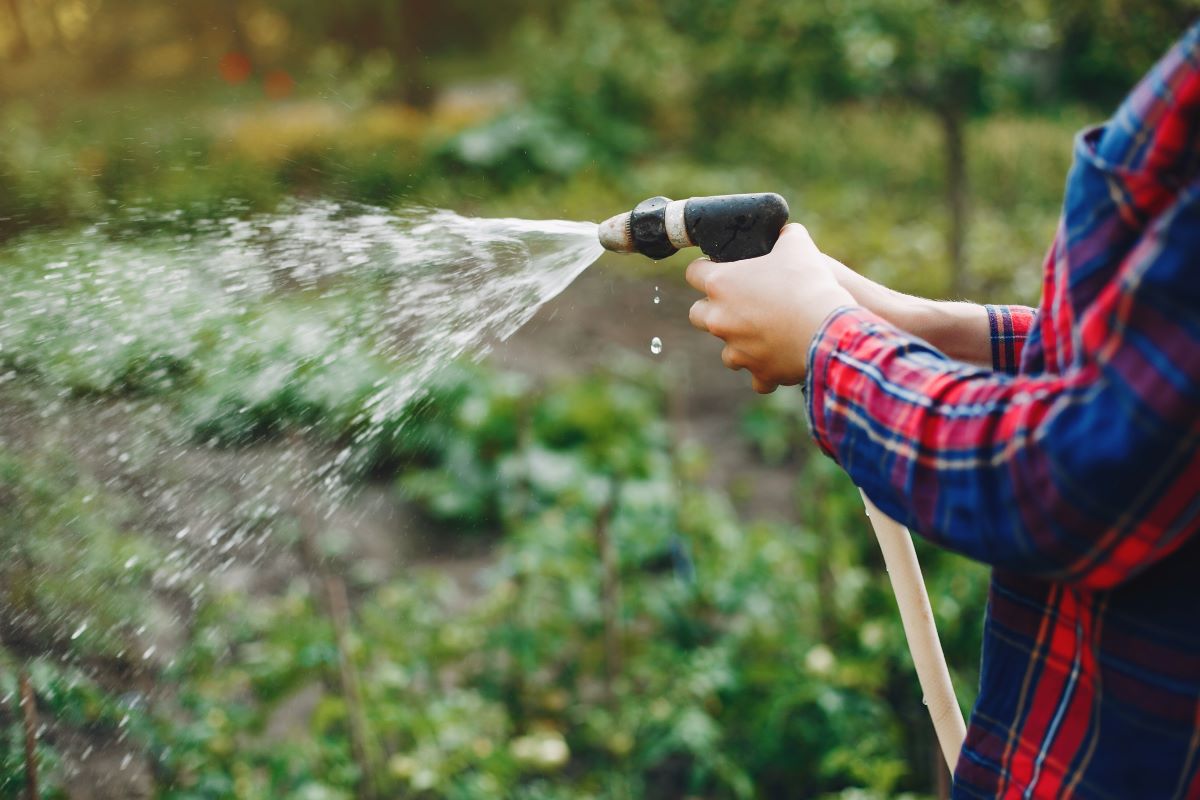
To address the question of “How many GPM is a garden hose?” isn’t solely about understanding the existing flow rate; it’s also about enhancing it for improved water efficiency. Upgrading hose equipment stands as a prime method to achieve this.
High-performance hoses can substantially impact GPM, allowing for more efficient water delivery. When choosing a new hose, considering its diameter, material quality, and durability becomes vital. A well-chosen hose can significantly boost GPM, elevating your outdoor tasks to a new level of efficiency.
Water-saving Practices to Optimize GPM Usage and Conserve Water
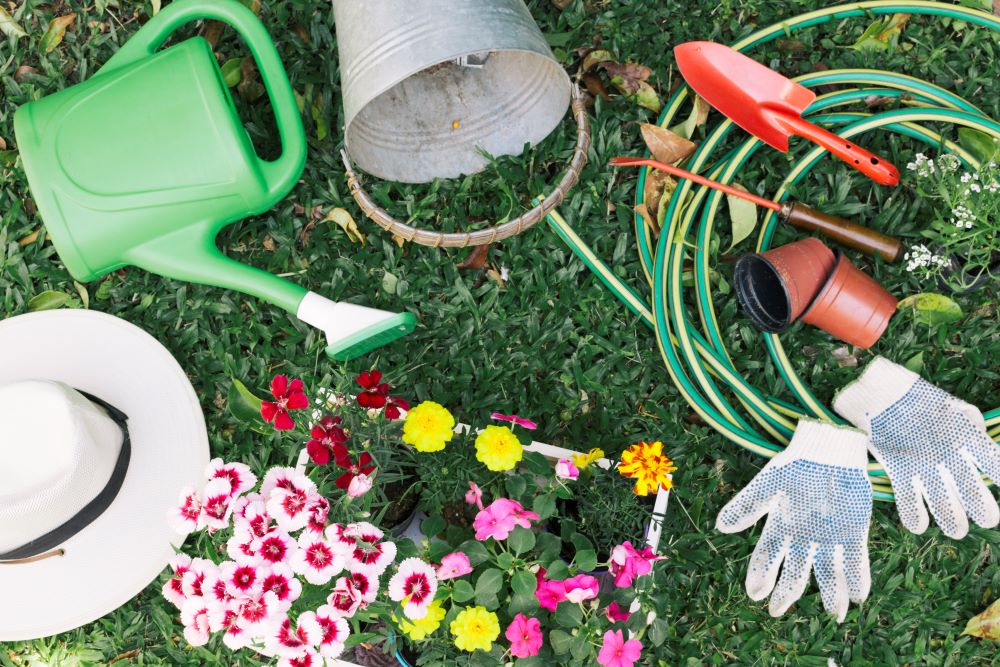
The quest for optimal GPM extends beyond mere flow rates, and it delves into water-saving practices that balance efficient use with environmental responsibility. Drip irrigation systems are a prime example, offering precise water delivery directly to plant roots. This not only optimizes GPM usage but also conserves water by minimizing evaporation and runoff.
Mulching is another effective practice to enhance water efficiency. You can consider adding a layer of mulch around plants and in garden beds to help retain soil moisture by reducing evaporation. Mulch acts as a barrier, preventing excessive water loss and reducing the frequency of irrigation, ultimately optimizing GPM usage.
Rainwater harvesting is yet another strategy to conserve water and maximize GPM usage. It can be stored and used for outdoor watering purposes by collecting rainwater from roofs or other surfaces. You can implement a rainwater harvesting system that allows the utilization of natural, untreated water while reducing the demand for potable water from other sources.
FAQs
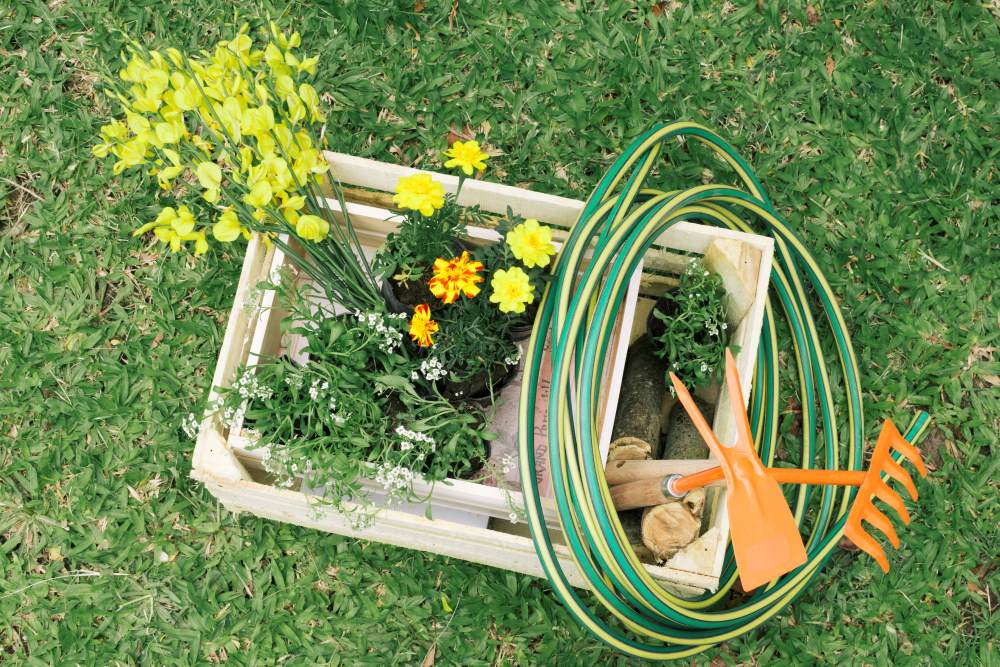
Q: Does a higher GPM always mean better performance?
A: Not necessarily. While a higher GPM can be beneficial for tasks like thorough cleaning, it’s important to balance it with the specific requirements of each task. Using excessively high GPM for delicate tasks may lead to water wastage or damage.
Q: Can a garden hose’s age affect its GPM?
A: Certainly, as a hose age, mineral deposits can accumulate inside, constricting water flow and influencing GPM. To counteract this, you should do regular maintenance, including lushing the hose periodically, using solutions to remove mineral buildup, or employing filters that can help maintain or restore the hose’s optimal GPM.
Q: Can the weather affect the GPM of a garden hose?
A: Yes, weather conditions, particularly extreme temperatures, can indeed have an impact on the GPM of a garden hose. In colder temperatures, water tends to become denser, leading to a slightly higher viscosity. However, it’s essential to note that the impact of weather on GPM is generally subtle and may not be significantly noticeable in most everyday scenarios.
Q: Does the material of the hose nozzle impact GPM?
A: Absolutely, the material and design of the hose nozzle play a significant role in influencing GPM. Nozzles with narrower openings or intricate internal mechanisms might result in a lower GPM. Conversely, nozzles designed for higher flow rates and equipped with adjustable settings can facilitate a higher GPM. Choosing a nozzle that aligns with the desired GPM and water pressure for specific tasks is essential to ensure efficient water delivery while avoiding unnecessary wastage.
Conclusion: How Many GPM is a Garden Hose? Unveiled the Flow Rate!
Through this exploration of “How many GPM is a garden hose,” you have gained insights into factors shaping flow rates and water efficiency. By now, you can leverage this comprehension to elevate diverse tasks, spanning from nurturing gardens to efficient cleaning, all while embracing responsible water consumption.
Related Articles